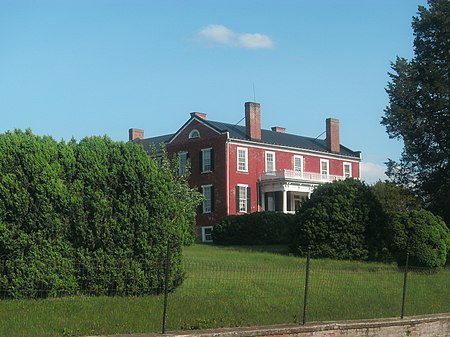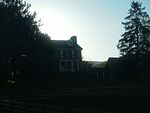Ben Venue (Washington, Virginia)
Farms on the National Register of Historic Places in VirginiaHistoric district contributing properties in VirginiaHouses completed in 1846Houses in Rappahannock County, VirginiaHouses on the National Register of Historic Places in Virginia ... and 7 more
NRHP infobox with nocatNational Register of Historic Places in Rappahannock County, VirginiaNorthern Virginia Registered Historic Place stubsRappahannock County, Virginia geography stubsSlave cabins and quarters in the United StatesUse mdy dates from August 2023Washington, Virginia

Ben Venue is a historic home and farm located near Washington, Rappahannock County, Virginia. The main house was built between 1844 and 1846, and is a three-story, five-bay, brick dwelling with a side gable roof and parapets. It features a one-story porch that covers the central three bays; it has four Doric order columns supporting a bracketed entablature. The property also includes three brick slave cabins, the original Fletcher homestead, kitchen, smokehouse, privy, and a formal garden.It was added to the National Register of Historic Places in 1979.
Excerpt from the Wikipedia article Ben Venue (Washington, Virginia) (License: CC BY-SA 3.0, Authors, Images).Ben Venue (Washington, Virginia)
State Route 729,
Geographical coordinates (GPS) Address Nearby Places Show on map
Geographical coordinates (GPS)
| Latitude | Longitude |
|---|---|
| N 38.721666666667 ° | E -78.064166666667 ° |
Address
State Route 729
State Route 729
Virginia, United States
Open on Google Maps








